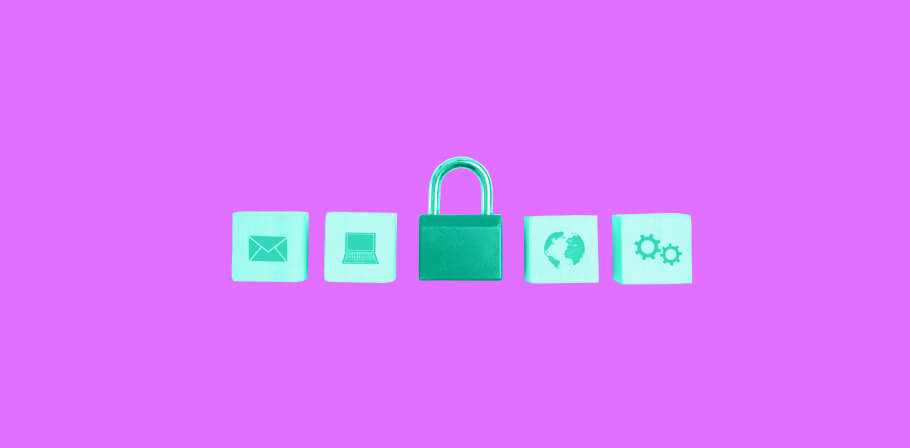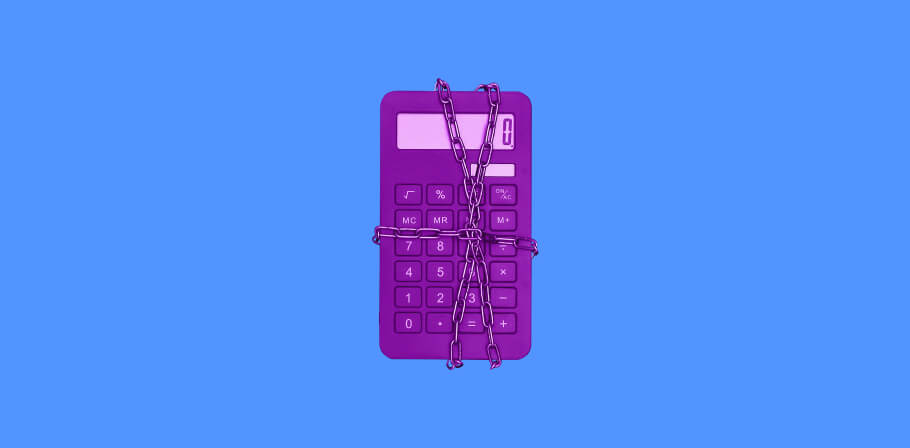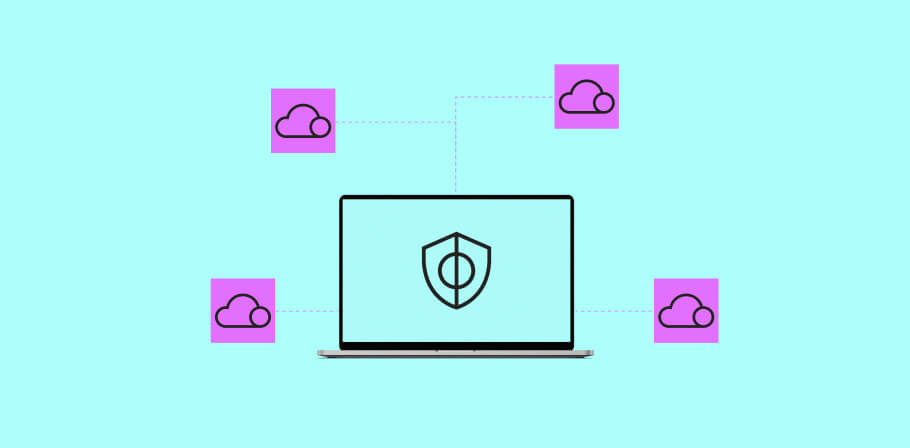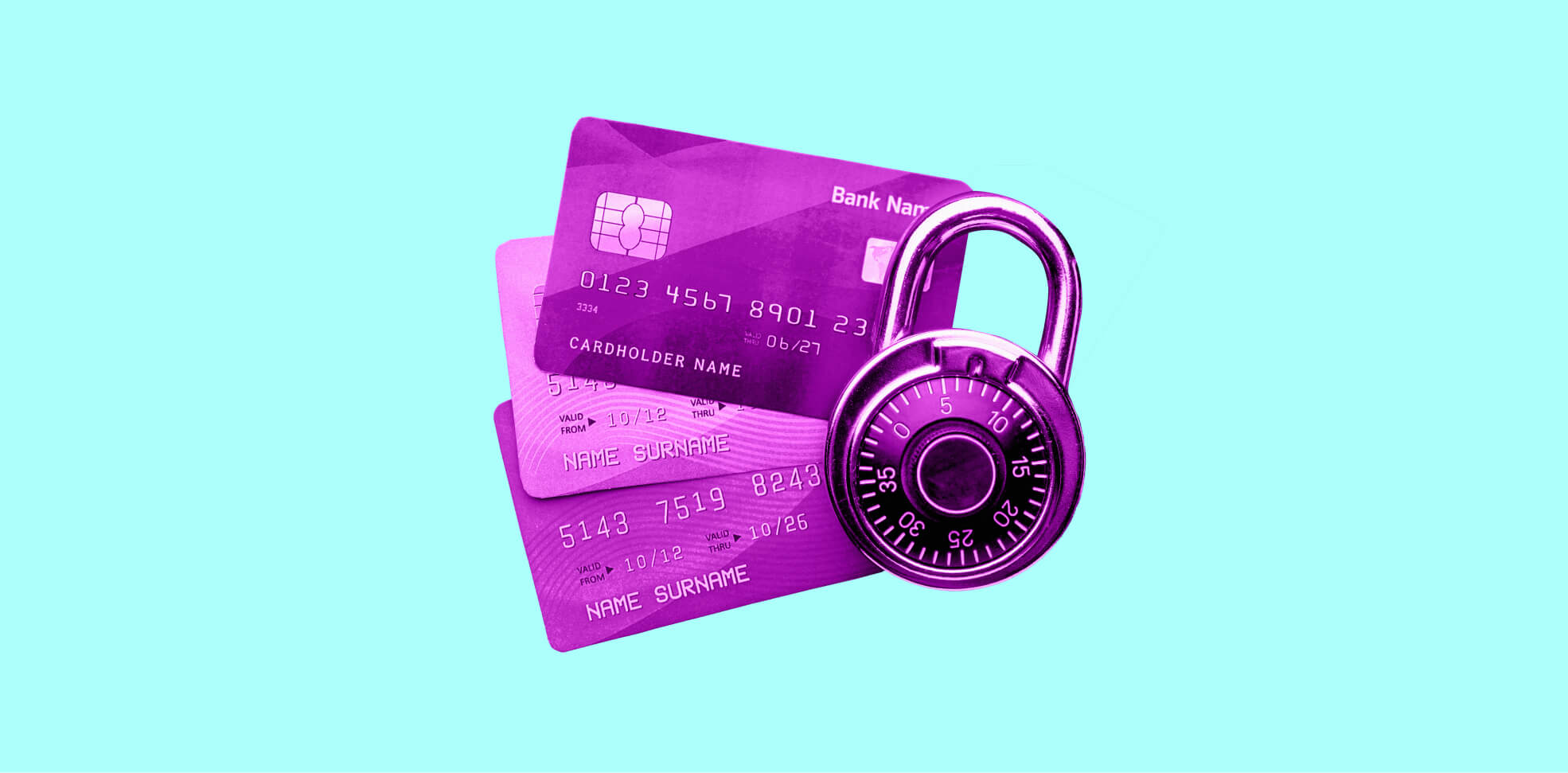Fraud losses have surged. In 2023, U.S. consumers reported losing more than $10 billion to fraud. Likewise, ecommerce payment losses reached a reported 41 billion in 2022, and bank and payment transfers account for yet another $1.59 billion lost. For financial institutions, a robust fraud defense strategy is a must — or they risk losing large sums of money to fraudsters.
But financial fraud prevention is a nuanced problem. Criminals are sophisticated. Banking technology is complex. And no one wants their cybersecurity measures to scare away consumers.
Let's explore fraud detection in banking and how you can best protect your financial institution.
What is fraud detection and prevention in banks?
Fraud detection and prevention in banks is a set of defense protocols that mitigate financial crime. Different tools and security practices help limit risk exposure. Such protections safeguard you and your customer's assets.
More specifically, banks often divide their defense posture into two categories: prevention and detection.
Prevention involves all proactive defense activities. These are the measures designed to stop fraudulent activity — before it occurs. Examples include the use of account passwords and things like employee training.
Detection refers to strategies you can employ during or after a fraudulent attack. These measures help limit the fallout damage. Examples include data breach responses and the use of transaction monitoring tools.
GET YOUR BANKING FRAUD PROTECTION RIGHT WITH EPAM STARTUPS & SMBS
Our cybersecurity consultants are here to advise you on the best cybersecurity strategy for your financial institution.
How many fraud attacks does a typical bank face each month?
Unfortunately, banks are a highly targeted sector. Financial institutions hold large sums of monetary assets, which attracts bad actors. Banks also prevent a level of convenience, as numerous physical branches (with fewer security resources) function as weak points. And since most banks connect via a network of digital banking systems, they offer the perfect opportunity for tech-savvy fraudsters.
As a result, reports show that banks dealt with an average monthly attack rate of 1,765 in 2022. And the previous year showed an average of up to 2,030 per month. For each of those years, financial institutions prevented less than half of those attacks.
Of course, several aspects can impact these numbers. Attack rates depend on factors like the bank's size, the amount of financial assets held, brand recognition, etc.
Typical digital banking fraud scenarios
So what does a typical case of banking fraud look like? There are myriads of attack points, as fraudsters have devised numerous complex schemes.
For example, many criminals use social engineering scams that exploit human error. They might impersonate actual bank officials to demand personal identification data from unsuspecting victims. Or they will send out false emails and use trick phone calls. If the victim unknowingly hands over passwords, fraudsters gain easy access and can drain any funds from open bank accounts.
Or, consider the work of hackers. Teams of tech-savvy individuals may commit fraud via large-scale data breaches. They then may attempt further fraudulent activity, such as demanding a ransom or selling the information on the dark web.
There are also plenty of instances of internal fraud. Employees or bank insiders may abuse their privileges. With user access, it's all too easy to perpetrate negligent behavior. Internal fraud is hard to defend, as it is an attack executed within your own company.
The known banking fraud trends are endless. All financial institutions must prepare for a host of attacks, from loan scams to identity theft to card skimming.
What are the biggest challenges of banking fraud detection and prevention?
Despite everyone's best attempts, there are no quick fixes for the common banking fraud scams. The fraud economy is ever-changing. That constant evolution creates several biggest fraud challenges for institutions:
- Sophistication: First, fraudsters can improve. They are technically skilled and will devise novel scams for personal gain. That makes fraud detection in banking very complex, especially for organizations that have not adopted the latest technology.
- Emerging threats: Second, fraudsters take advantage of the vulnerabilities that arise with new technology. Case in point, think of how the rise of decentralized finance also increased related crypto-scams. Many fraudsters exploit loopholes as unknown fail points until new fraud solutions for banks are fully tested and trialed. Good bank fraud detection requires constant vigilance towards new products or solutions, a challenge for any resource-strained bank.
- Reliance on data: Third, as bank services undergo digital transformation, the surface area of attack increases. Criminals have more incentive than ever to engage in unlawful activity. That helps explain the current popularity of technical account takeovers and data breaches. Banks will struggle to protect banking consumers as the value of customer data increases.
- Friction vs security: Fourth, banks can't adopt complete shutdown defense tactics. Too much security causes friction. Customers who cannot access their bank accounts grow frustrated and leave. And managers in banks with restricted access are unable to perform their jobs well. But if you opt for a lax defense posture, you are more likely to fall victim to insider fraud. Finding that balance presents a challenge for many institutions.
- Speed: Lastly, online banking services are fast and convenient. That speed makes it hard to identify instances of fraud. As the volume and pace of transactions increase, banks will find accurate fraud detection a time- and resource-intensive task.
Novel ways to detect and prevent fraud in banking
Even with such challenges, the entire financial industry continues to explore new banking fraud protection solutions. Here are some of the more recent and innovative fraud detection tools:
Behavioral analytics
Data analytics tools can assess customer activity to discover possible fraud patterns. These solutions first establish a set behavior standard. With that baseline outlined, any aggressive change from the expectation hints at fraud.
For example, you might create a baseline customer profile. This profile lists the typical transactions and bank services the customer uses. If, without warning, that same customer fails several log-in attempts, that sudden change in activity suggests account takeovers. The unexpected difference in behavior triggers an alert — now you can properly investigate.
As a result of its effectiveness, demand for behavior analytics tools has skyrocketed. The market has an expected annual growth rate of 37% percent and will likely reach an estimated value above 7 billion by 2030.
Biometrics
Humans often represent a key weak point in any security posture. Many fraudsters can bypass your stringent defenses by simply hacking the mobile devices of unsuspecting users. To that end, many banks now adopt biometric authentication to prevent fraud.
Biometrics uses the unique characteristics of each user to shore up security. Unlike passwords or PINS (which can be stolen or compromised), fingerprints, faces, and voices all have specific traits. Fraudsters have a much harder time trying to replicate these security factors.
The most common example is the use of biometric IDs on smartphones. For banking customers, a facial or fingerprint scan is a low-friction event. But for a criminal with a stolen phone, they have no way to access the bank app without facial recognition.
Biometrics are already one of the most customer-preferred advanced security measures. As a result, the biometric technology market is valued at 42.9 billion as of 2022 and should nearly double by 2027.
Fraud monitoring
Banks are also investing in real-time banking fraud monitoring. Advanced algorithms can now detect fraud and risky activity while it occurs. It is a form of analysis that assesses a suspicious transaction against different contexts (location and time).
For example, a transaction monitoring solution can measure the location of a device. If a U.S. user attempts to log in to their bank app from Europe, the tool can flag and freeze the account. The geolocation context does not fit the profile. And the monitoring tool will flag that anomaly as it happens. Such rapidity helps banks detect fraud and factors into things like anti-money laundering or anomaly detection tools. You can stop criminals at the exact moment they attempt any criminal activity.
Data sharing
The more data you have, the easier it is to identify fraudulent payments. With that in mind, many large institutions turned to big data. Rapid analysis of millions of transaction data points helps the banking industry gain a small advantage over fraudsters and their ever-changing schemes.
Due to its success, many organizations also started to share their collected data. That way if one financial institution fell victim to a new scam, it could send an immediate alert to all other financial institutions. Together, everyone helps each other quickly prepare new defenses. The collective response rate to new risks improves. Sharing also helps lower the cost of data, and many smaller institutions with fewer resources can access transaction data they would never be able to process on their own.
Of note, studies found that entire economies that adopt open financial data sharing earn a 1 to 5% lift in GDP, with improved fraud prediction listed as a primary benefit.
Machine learning and artificial intelligence (ML/AI)
Lastly, banks have integrated machine learning and AI-powered tools into nearly every facet of fraud detection. Compared to static fraud tools, cognitive systems are adaptive. They can grow beyond the basic rules first given to them.
That adaptability has direct applications to fraud detection. The relational nature of machine learning creates a form of predictive analytics, a technical advantage ideal for assessing emerging threats. It can also greatly assist in the reduction of false positives. Advanced capabilities help you understand complex patterns, which is well-suited to the evolving sophistication of fraudsters.
Such a fraud detection system is highly effective. KPMG already found back in 2020 that an AI-powered anti-fraud tool lowered fraudulent transactions by 40%. Such success helps explain why 93% of surveyed financial institutions plan to invest in AI solutions within the next 2-5 years. And of that group, 63% listed increased fraud prevention as the primary driver for their AI investment.
IMPLEMENT NEXT-GEN FRAUD PREVENTION IN BANKS FOR YOUR BUSINESS
EPAM Startups & SMBs is your cybersecurity engineering provider of choice with 15+ years serving BFSI clients.
Banking fraud trends
The increasing volume of fraud is of little surprise, especially with the rise in ecommerce-related fraud. But to create an effective security posture, you must prepare for the specific types of financial crimes that a fraudster may use against your institution. With that in mind, here are some of the current trends that will likely characterize the future of the fraud detection economy:
- Fraud-as-a-service: Just as banks are working together, so are fraudsters. Like any standard business model, fraudsters now offer fraud services to other bad actors. Collective fraud rings sell tools (e.g. malware kits), stolen customer data, and money-laundering resources to criminal buyers. The combined efforts of educated criminal networks will likely pose one of the biggest threats to banks in the coming years.
- Artificial intelligence: It's not just security professionals who see the benefits of machine learning. Fraudsters are also leveraging artificial intelligence to enact their schemes. The use of AI-generated deep fakes (copies of someone's face or voice) doubled between 2022 to Q1 of 2023. AI also provides criminals with greater computing power, which could result in stronger bot attacks and credential stuffing.
- Biometrics spoofing: Once banks adopted biometrics to help secure customer accounts, bad actors found ways to spoof the authentication system. Some will use fake fingerprints. Others try using high-resolution images. Some individuals will even intercept biometric data (like voice recordings) to gain access, even past two-factor authentication. Biometrics offers significant security advantages, so it will also garner greater interest from bad actors.
- Synthetic IDs: Synthetic fraud is considered one of the fastest-growing financial crimes. Criminals make hybrid credit and ID cards with a mix of real and fake data. That makes it very hard to screen and detect. And since it is a Frankenstein ID, it can obtain credit with no real-life counterpart (which has obvious uses for money laundering). Finding new bank fraud detection strategies for this novel form of credit card fraud will likely command significant attention and resources going forward.
Fraud prevention checklist for protecting customers
Many bad actors know that the average consumer is unaware of the latest scams. And they will attempt to exploit that fact. End users (and their devices) will always present a vulnerability for you and your organization.
Still, you can encourage customers to protect themselves (and by extension, help you stop bank fraud). Educate your users with some of the following banking fraud detection best practices:
Update customer contact information
Unique identifiers are crucial for proper authentication. If those identifiers are outdated (like an address) or incorrect (like a misspelled name), user identification becomes a near-impossible task. It can also cause false positives with Address Verification Systems (AVS) or create errors with your data matching. Regularly request your bank customers to update their personal information.
Require strong passwords
Simply put, a random and lengthy chain of letters, capitalizations, and symbols is hard for a criminal to compromise. Ask your customers to use these high-grade passwords, even if it creates extra security friction. And if possible, request that all your customers use secondary password controls such as two-factor authentication, biometric passwords, or one-time security codes.
Encourage mobile alerts
Mobile alerts engage the account holder to help detect fraud. Imagine a customer who receives a phone notification about possible activity executed with their card. With minimal hesitation, they can quickly confirm or deny if their card is, in fact, stolen (and unauthorized transactions occurred). That improves the speed and accuracy of your banking fraud detection. In turn, the customer helps minimize credit card fraud losses, a true win-win. Request that customers allow for mobile app banking fraud notifications.
Ask customers to update devices
Smart criminals will always try to exploit old devices and outdated security. In response, cybersecurity professionals continually update financial systems with new security patches. Unfortunately, many consumers do not keep their devices up-to-date. The security patches remain unused, leaving the device exposed to account takeovers and other forms of fraud. Communicate with customers about using the latest security patches with all devices and bank accounts.
Inform customers of fraud red flags
A significant portion of fraud schemes involve no hacking. Instead, criminals use social engineering scams to trick consumers into giving away their secure credentials. Common examples include phishing emails or scam phone calls. Engage in teaching campaigns to help educate customers about these red flags of fraud and how to prevent bank fraud (e.g. tips on how to protect a bank account from fraud). Consumers wary of suspicious links or trick sales help limit socially engineered fraud. It's a simple yet effective form of bank account fraud protection.
About our fraud prevention services
Synthetic fraud, deep fakes, and biometrics all demand greater sophistication. Simply put, the fraud economy (and cybersecurity) is complex. Many institutions do not have the resources or technical know-how to fight fraud effectively.
If you fit within that description, consider hiring banking fraud prevention professionals. Backed by EPAM, our cybersecurity engineering and consulting team has over 15 years within the financial industry, and we offer the knowledge and expertise you need. Whether that includes endpoint security measures or assessing cloud vulnerabilities, we provide custom banking solutions designed to help lower your fraud risk.
And with a range of service options (consulting, IT services for banks, outcome-based project engagement), we can help you build high-grade fraud detection systems with less hassle and cost.
Conclusion
The actions of fraudsters present an ever-present danger in the financial sector. As the banking industry adopts a wider technological footprint, criminals have likewise grown in sophistication. Complex forms of fraud now threaten the safety of business and consumer assets.
Luckily, there are numerous ways you can limit and prevent banking fraud. Novel tools such as behavior analytics and biometrics all offer new ways to secure business operations. Your bank’s reputation depends on the measures you take to adopt these protective solutions. If you haven’t yet, consider connecting with the team at EPAM Startups & SMBs. We would be happy to discuss your project!
FAQ

Anush has a history of planning and executing digital communications strategies with a focus on technology partnerships, tech buying advice for small companies, and remote team collaboration insights. At EPAM Startups & SMBs, Anush works closely with subject matter experts to share first-hand expertise on making software engineering collaboration a success for all parties involved.
Anush has a history of planning and executing digital communications strategies with a focus on technology partnerships, tech buying advice for small companies, and remote team collaboration insights. At EPAM Startups & SMBs, Anush works closely with subject matter experts to share first-hand expertise on making software engineering collaboration a success for all parties involved.
Explore our Editorial Policy to learn more about our standards for content creation.
read more















